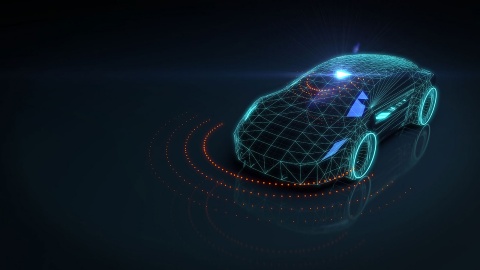
Self-driving e-cars car that change their shape at the push of a button, give themselves a new coat of paint upon request, and adapt their passenger compartment to suit individual needs – that, or something similar, is what the car of the future could look like.
Welcome back. My name is Hannah. You may remember me. I previously took you on a journey into the future to introduce you to the Internet of Things (IoT) in 2030. This time I would like to acquaint you with the car of the future and show you how mobility will change.
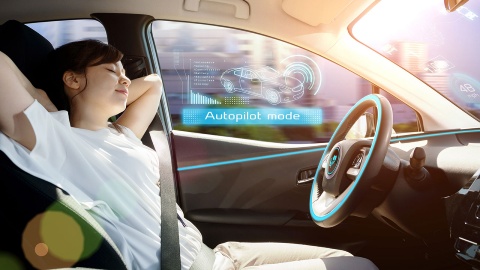
Autonomous driving
One moment, please. Let me just get my NFC coat from the mobile robotic coat check here at the Cybersecurity Center, where I work, and then we’ll be on our way. You must be wondering how I can drive while at the same time giving you my undivided attention. Well, that’s easy. I don't have to steer – I let the car do it. In 2030, roughly four million cars have reached Level 5 and thus drive fully autonomously. You may have already heard about that. No? Then come outside with me and I’ll show you.
Level 5 – driverless driving
You’re probably familiar with Level 3. At this level the driver doesn’t need to keep an eye on the traffic all the time but can do other things, such as reading, while the car looks after longitudinal and lateral control on its own. At the same time, the driver must still be able to take over the driving again within a certain alert period, for example, in construction site situations. At Level 5, that’s no longer necessary, because the car adapts independently to road types, environmental conditions, and speeds. For us humans, that offers a lot of benefits that I personally wouldn’t want to do without anymore. But more about that in a moment. First, I have to request the self-driving car. All I need to do is swipe over the 3D app on my holographic wristband.
What is lidar?
Lidar sensors measure the distance to objects and hence work in much the same was as airplane radar. Instead of high-frequency radio waves, however, lidar emits weak laser light, which is not dangerous for the human eye. The light scans the area around the vehicle. In combination with cameras and radar, the system collects data that is then used by the smart computer to decide whether the car has to swerve, brake, or accelerate. It’s also important that two of the three sensor types work well ideally in every situation.
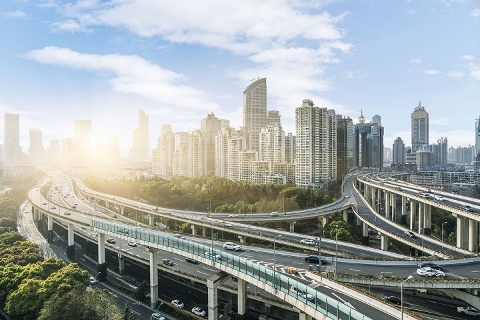
Congestion-free driving
And there it is. Please get in. And don’t worry, we’ll keep to our schedule for today. You need to know that congestion is forbidden by law in 2030. The decision was no great surprise to me, since two out of three people on the planet will live in cities by the year 2050 according to a forecast by the United Nations. Imagine what it would be like if everyone would drive and steer their own car under these circumstances. There would practically be permanent gridlock.
That’s why the government decided that only road users in cars that can communicate and coordinate with each other should be permitted. For example, if a vehicle in a line of cars brakes, it triggers a signal. The built-in artificial intelligence system Eugene II transmits this signal via the 10G mobile network to all other vehicles in a radius of several kilometers. As a result, all cars slow down simultaneously, thus preventing a traffic jam in the first place.
What is torque vectoring?
Torque vectoring control ensures that the car does not sway or tip over when driving autonomously. Most people know the technology from the “moose test” – the technical term is ESP, which stands for “electronic stability program”.
Did you by any chance notice anything else that has become a thing of the past in the meantime? That’s right: traffic signs. Since cars now coordinate with each other, no matter what the situation, and even pay unrestricted attention to pedestrians, the government has had the forest of traffic signs cleared away. And, I have to admit that I enjoy the unobstructed view of nature.
Third space – the sanctuary between the workplace and home
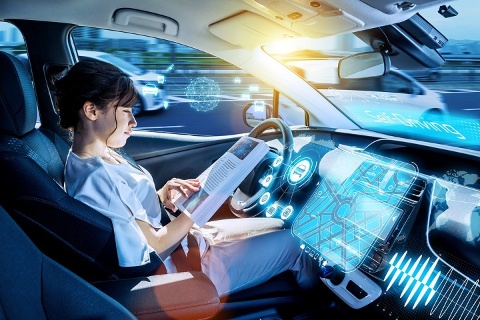
But let’s now simply relax and enjoy the drive. Can I offer you something? Maybe a glass of my favorite vintage “Cabernet Blanc Finlandia”? Since people no longer have to drive themselves in 2030, it’s perfectly alright to enjoy a sip of wine during the drive. In fact, the boundary between private and professional life has practically disappeared altogether. As a result, the passenger cabin is increasingly becoming a “third space” – a social sanctuary between the workplace and home, where you can relax or get some work done.
It’s no different for me either. I, for my part, mainly use the commute to relax, preferably with a round of Jupiter Monopoly. For those of you who don’t yet know it: In this 3D game, I get together with friends in breathtaking worlds and experience all kinds of adventures. Eugene II projects the necessary images onto a three-dimensional prism that appears in the center of the car and can thus be seen from all sides, which is ideal if a fellow player is with me in the car.

No more struggling to find a parking space
I don’t know about you, but I could do with something to eat now. There’s a nice café over there. I’ll just tell Eugene II that we want to get out here and that the car should find its own parking space. Since I’m a regular here, Eugene II keeps a standing reservation for me, so getting a table won’t be a problem.
You may remember on our last meeting that free parking spaces transmitted their availability to the car. Although this feature still exists, the city administration recently expanded its parking facilities. Public areas and buildings now have underground parking spaces right outside the café. For us, that means that we get out of the car and walk into the café while the car glides several meters underground before our eyes. And since it’s parked immediately nearby we don’t have to wait after the meal for it to return from the nearest parking lot, but can get back in right outside the door and drive off. It’s extremely convenient, especially when you’re in a hurry or it’s raining and you don’t want to have to wait at the curb.
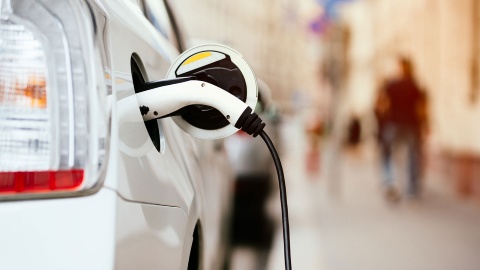
Electromobility in the post-fossil age
I personally don’t just enjoy the freshly prepared food in my favorite café, but also the fresh air outside. We can thank policymakers for this new quality of life. They reduced greenhouse gas emissions by 80 percent and largely achieved the long-awaited climate target – we as citizens can even expect further CO2 reductions in the coming years. A major contributor to this is the transition to electromobility and power generation from 100-percent renewable energy sources.
Battery charging for e-cars
I know that only a few people drove electric cars in 2018, even though ultra-high-power stations were already able to recharge a battery within about 15 minutes. Back then, a single battery charge covered a distance of around 200 kilometers. For long-distance drivers that was either completely unsuitable, or only suitable to a limited extent. In addition, charging stations were still few and far between, especially in rural regions.
In 2030, a lot has improved. Today, we don't just have smart streetlights with an integrated charging function every 20 to 50 meters in cities and rural regions. We now also have underground induction charging coils at major traffic junctions. If, for example, our e-car is waiting at an intersection at a red traffic light, the induction technology will charge our battery within a few minutes. If there’s not enough time for a full charge, the process will continue at the next induction coil. That way, e-car batteries will always have enough power. Payment is contactless via an integrated chip that is linked to your bitcoin wallet with 1,024-bit encryption. As you can see, it’s all really easy, secure, and convenient.

Car sharing – use instead of owning
Now that we’ve had some refreshment, I suggest we continue our journey. Our car is already waiting for us outside the door. And, yes, you have noticed that it’s no longer the car we came in, but a different one. In 2030, we no longer believe in owning our own car. People want to be flexible and no longer have to bother about charging the battery or dealing with customer service. The driver covers the expenses either via a flat rate or a flexible tariff. While the flat rate covers everything at a fixed price and is therefore suitable for frequent drivers, the flexible tariff is based on actual usage. That benefits occasional drivers in particular.
You already know the principle under the name “car sharing”, but unlike back then, car sharing in 2030 differs has one key difference:
Transpod – convertible car for individual needs
While you have to opt in advance for an SUV, a compact city car or a sports sedan, I start out by renting any car and then select the segment at the push of a button. This smart and multimodal solution is called “Transpod” – in other words, a convertible body.
For our round trip I suggest we stick with the Transpod CCV segment – Compact City Van. You think that “compact” and “van” are a contradiction in terms? Just watch what will happen next. As soon as I press the button for our selected segment on the dashboard, the front and rear of the previous renter’s sports sedan retract. The passenger cabin’s roof is then raised, which quadruples its interior volume. This version gives us enough room, on the one hand, to chat comfortably. And, on the other, the CCV is narrow enough to not get stuck in the dense city traffic, but get us quickly to our destination.
Granting access rights
The previous renter has sent the access rights to our Transpod straight to my holographic wristband via the cloud of our provider Transpod2Go. Infineon and Xain already presented the transmission of access rights back in 2018 at the ATV Cybersecurity Forum. See for yourself!
Blockchain-based Access Control

Customize your Transpod
Just because we rent cars instead of owning them in the future doesn’t mean we have to miss out on individuality. On the contrary. We can select not only the segment, but also the color of our Transpod.
Select the Transpod color
How about Neptune Blue with a hint of Uranus Turquoise? Or maybe Mercury Red instead? Our Transpod currently offers several million color combinations that we can select in our flat rate car sharing package. And if you create a new combination and submit it to the provider, you’ll get 60 free minutes as a thank you.
The creative customization of the car of the future doesn’t end with the body color, but also extends to the interior, for which numerous modes are available:
The car seat of the future
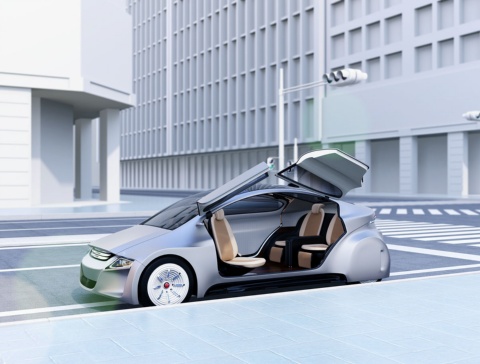
For our trip I selected the “We Time” program, because it’s great for talking on the road. When I’m on my way home alone and checking e-mails, I select the “Me Time” mode.
In either mode, the passengers can select their own car seat. I don’t know how you feel, but I usually pick the Relax program, which extends the backrest and you can also select the optional massage function. You also get a footrest. Extremely comfortable and relaxing, I find. Sometimes I even doze off. When that happens, Eugene II dims the windows. After all, people in the street don’t need to see me having a doze.
At the other end of the spectrum you have the Office mode. It provides an optional table for your laptop or a hologram device that uses your login data to simulate your personal workstation. The seat remains in a rigid upright position, which makes it easier to focus.
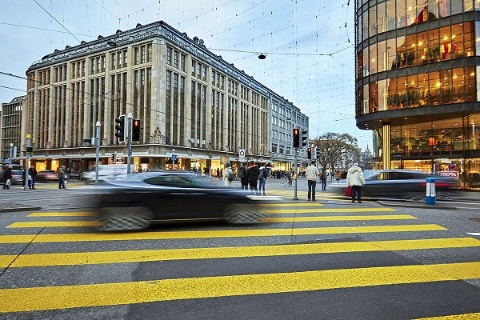
The interior of the future
Do you like the idea of a projected workstation? Then wait until you see what else the Transpod has to offer. If you swipe across this workstation app, Eugene II will call up your personal calendar, your contacts, and a host of other useful office functions. And it gets even better: You can move them via gesture control onto the head-up display, the dashboard, or the panorama roof. You can even seamlessly combine multiple 3D images if you want to conduct a video conference while keeping an eye on your messages. Wait, I’ll show you.
I’ve already seen frequent drivers who even simulate their entire living room. After all, I guess they want feel at home on long trips. I myself rarely use this function, because my trips are never longer than 20 minutes. But if I feel like reading an e-magazine, I can download it from my digital library either onto the head-up display, the previously mentioned 3D prism in the center of the car, or on my VR glasses.
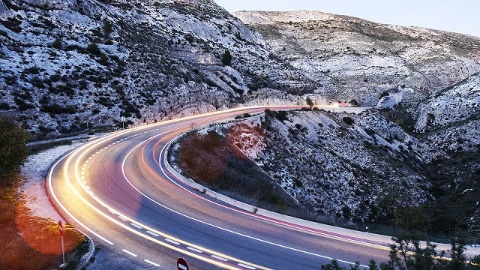
Outlook: Flying instead of driving
Speaking of home, I see it’s already late. But before I say goodbye, I would like to give you a short preview of the distant future.
Ground-based mobility will still be with us in 2050, but it’s extremely likely that people will make more use of three-dimensional space. For example, we expect e-air taxis to replace ground-based cars for the simple reason that our streets will no longer be able to accommodate the needs of a rapidly rising population.
You yourself have already witnessed this development in your era. Back then, however, it was still unclear how air traffic would be controlled, but our government has now solved that problem as well. What I can already reveal is that we will soon be able to board an electric flying object, whether a drone or an airplane, and fly wherever we want to go without further ado.
Last update: January 2019
